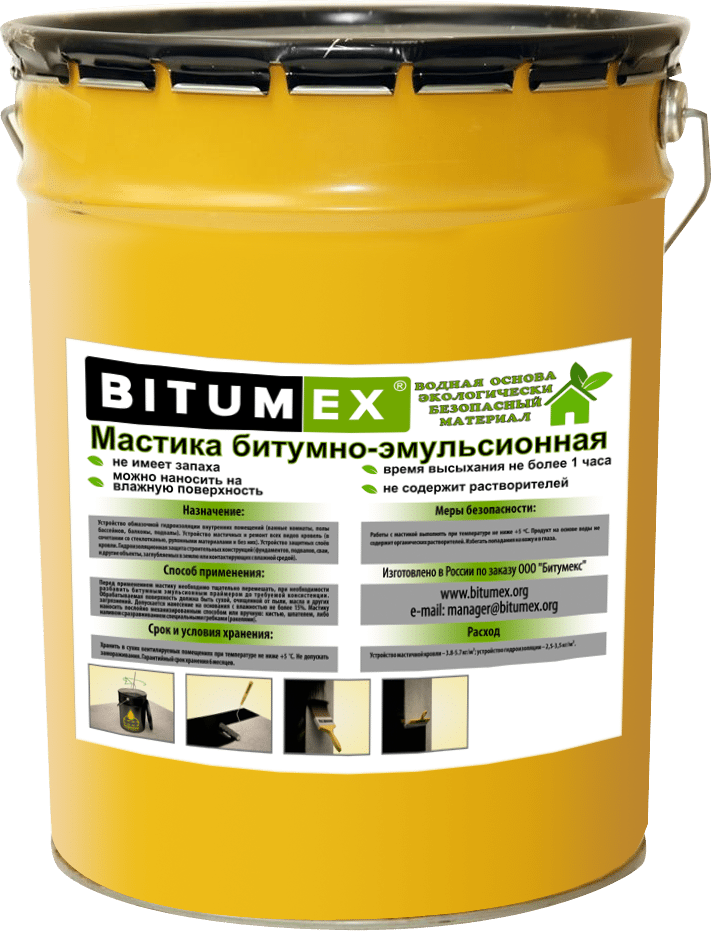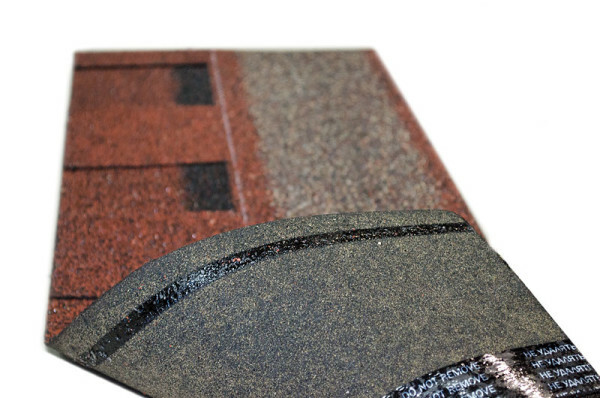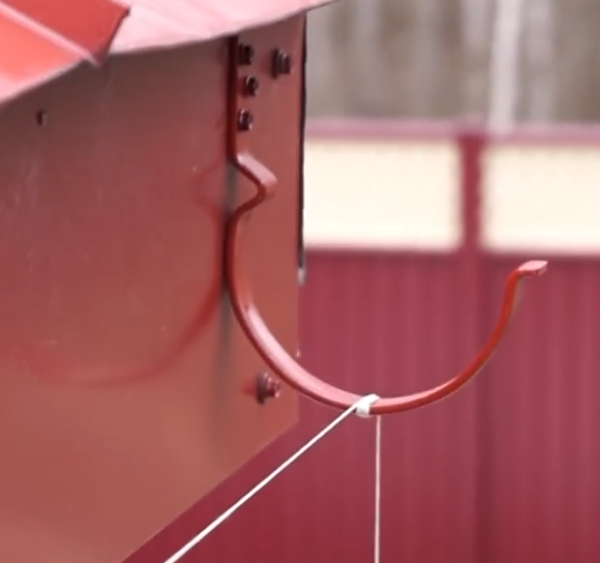Waterproofing for roof: 10 the most effective and advanced materials
Table of contents
-
1 roll materials
- 1.1 Material 1: EPDM membrane
- 1.2 Material 2: PVC membrane
- 1.3 Material 3: diffuse membrane
- 1.4 Material 4: Polyethylene film
- 1.5 Material 5: evroruberoid
-
2 obmazochnye materials
- 2.1 Material 6: bitumastics
- 2.2 Material 7: Polymer mastic
- 2.3 Material 8: rubber paint
- 2.4 Material 9: liquid rubber
- 2.5 Material 10: penetrating waterproofing
- 3 Output
The choice of waterproofing material - important stage of construction or repair of any roof. To help newcomers to this issue, I will talk about the most efficient and modern materials that can be used for different types of roofs.
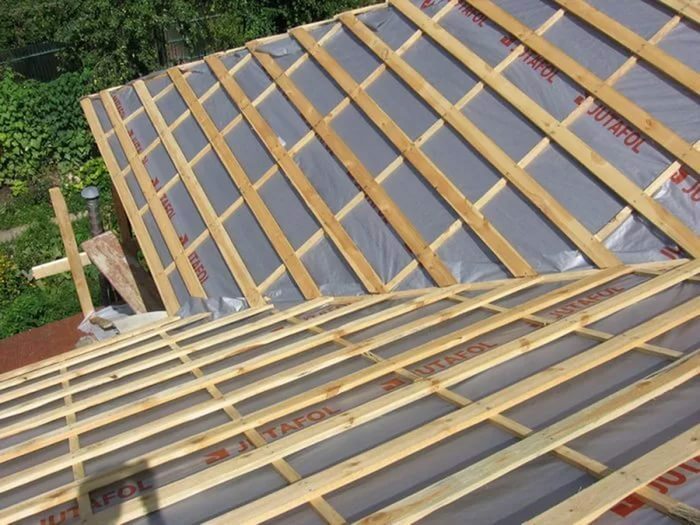
From the choice of waterproofing material depends on the durability of the entire roof
All existing waterproofing materials for roofs can be divided into two types:

types of materials
Next, a look at the materials that are assigned to each of the group.
roll materials
Roll materials for waterproofing roofs now enjoy the greatest popularity. They are used for both flat and pitched roofs for.
All kinds of roll covers abound. However, most often for waterproofing flat and pitched roofs of the following types are used:

roll materials
Material 1: EPDM membrane
EPDM-membrane is made of ethylene-propylene rubber, and is used for protection from humidity flat roofs. Just as it is possible to seal the roof with a slight slope.

EPDM membrane - durable waterproofing material for flat roofs
dignity:
- Elasticity. Indicator tensile elastic material is 400%. This allows you to use it for the most complex configurations of roofs;
- Low weight. Square meter weighs less than half of the film kilogram;
- Durability. Lifetime is more than half a century;
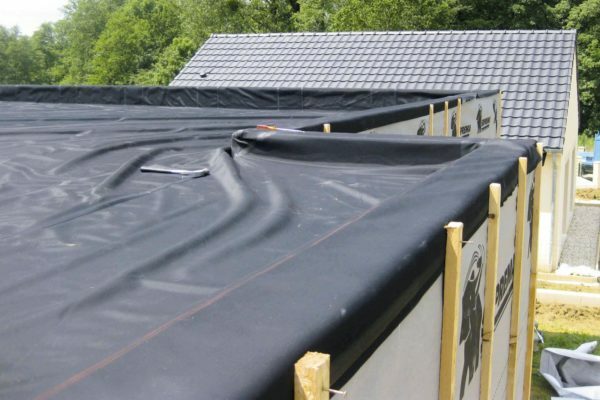
Coated EPDM-membrane roof can last more than half a century
- Resistance to environmental influences. The film is not afraid of low and high temperature, ultraviolet radiation and other negative factors;
- The simplicity and speed of laying. stacking speed due to the roll size, the width of which can reach 15 meters. The length of the web in this case is usually 50-60 m.
mostly self adhesive mounting method is carried out, so that no additional equipment is required.
Disadvantages:
- Glue seam. Since webs are glued seams, coating strength is reduced. However, there were a membrane joints which can be cured lately;
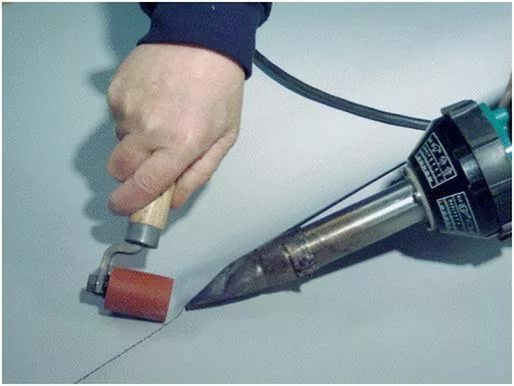
Vulcanization - the most reliable way of joint arrangement
- High price. Worth more than most of the other materials of this class.
cost:
| Mark | Cost of 1 m2 |
| CARLISLE 9,15 x 30.48 m | 700-800 |
| Firestone EPDM Rubber Cover | 540 |
| Giscolene | 600 |

PVC Membrane - reliable waterproofing covering for flat roofs and pitched
Material 2: PVC membrane
PVC (polyvinyl chloride) membrane - this is another effective way to ensure waterproofing of the roof. Moreover, these films have been successfully used both as roofing material for flat roofs, and as a waterproofing crate in pitched roofs.
Advantages:
- Strength and elasticity. By these parameters exceed analog PVC membrane made of polyethylene;
- Resistance to extreme temperatures. The coating is not afraid of any frost or high temperatures;
- Puncture resistance. This prevents damage to the film during mounting;
- Durability. The service life is more than 25 years.

PVC membrane may serve on the flat roof over 25 years
Disadvantages. PVC membrane EPDM is cheaper than analogue, but more value than many other coatings.
cost:
| Mark | The cost of 1m2 |
| Logicroof V-RP | 430 |
| Ecoplast V-RP | 340 |
| PLASTFOIL | 480 |
| Technonikol | 320 |

Diffuse membrane - "breathable waterproofing for pitched roofs
Material 3: diffuse membrane
Unlike films described above, diffuse membrane intended for use exclusively on pitched roofs. Their main difference from the above-described materials is that they are able to hold moisture in one direction.
The principle of operation of these membranes is as follows:
- Fleecy layer facing the room, collecting moisture. Accordingly, the membrane is working as it should, it must be laid correctly - smooth side out;
- Assembled on the villi moisture seeping through the microscopic holes to the outside;
- On the outer side of the membrane has a smooth surface over which the liquid flows downwards.
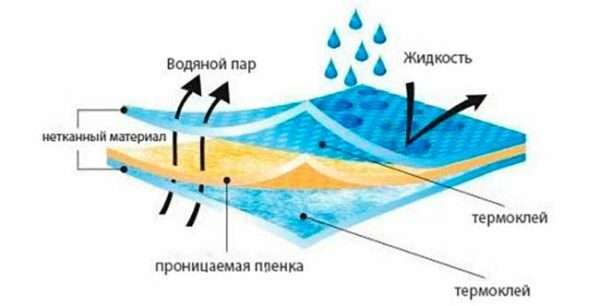
Operating principle of diffuse membrane
Depending on the bandwidth, diffuse membrane are divided into three types:
- Small diffusion. Per day membrane can hold more than 300 mg per square meter liquid. I must say that these membranes for waterproofing roofs are rarely used;
- The average diffusion. Throughput moisture capacity is from 300 to 1000 mg per square meter per day. These membranes are suitable for use in temperate climates;
- High diffusion (superdiffuznye). Throughput is 1000 mg per square meter per day. Superdiffuzionnaya membrane is used in insulated roofs, and in regions that exhibit large temperature differences.
In the case of thermal insulation of roofs, insulation between the membrane and be sure to provide ventilation gaps. Furthermore, in order to evaporate moisture from the surface of the membrane, it is also necessary to provide a gap between it and the roofing material. To do this, make kontrobreshetku.
Exception - roofing slate. Due to the undulation of the material, ventilation under-roof space can be carried out even without kontrobreshetki.

In order to ensure the ventilation gap on top of the diffusion membrane mounted kontrobreshetka
Dignity. The main advantage of diffusion membrane lies in its ability to "breathe". In addition, active material for waterproofing roof has other positive qualities:
- Durability. Service life is at least 30 years. The most durable reinforced membrane - their service life can reach 100 years of age;
- Reliability. Thanks to its special structure, moisture can penetrate only in one direction. Thus, the membrane protects the insulation and the interior from moisture.
- Strength. The membrane is difficult to damage during installation;
- Heat resistance. The material can withstand temperatures of -40 to +80 degrees;
- UV resistance. The membrane is capable of up to three months to withstand direct exposure to sunlight.
Under the metal and other metal surfaces it is recommended to use anti-condensation membrane. Unlike conventional diffuse membrane they are able to absorb and retain a large amount of moisture. When the ambient temperature water of a material evaporates and dries the membrane.
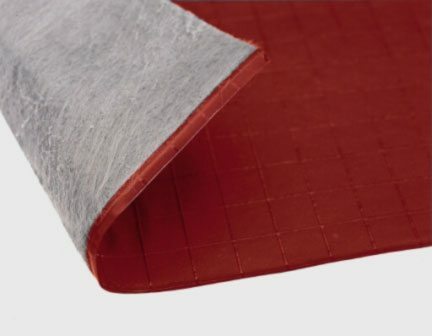
Anti-condensate membrane capable of absorbing large amounts of moisture
Disadvantages. Cons as such have no diffuse membranes, except for the higher cost compared to some other films.
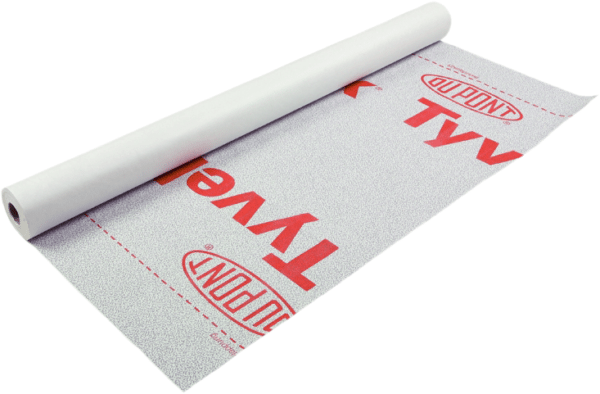
Tyvek - sturdy and durable membrane from the American manufacturer
cost:
| Mark | The cost in rubles per roll 1,5h50 m |
| Tyvek | 6300 |
| Ondutis | 2400 |
| YUTAVEK 100 | 3800 |
| D-Folie | 5500 |

Plastic film - the cheapest roofing waterproofing material
Material 4: Polyethylene film
Plastic film -dissemination waterproofing material for roofs, which is intended for laying under the roof covering pitched roofs. Depending on the structure, the film is divided into two types:
- Single layer. Perform a high-density polyethylene. Its thickness is usually at least 200 microns. This film is the cheapest, but its life is not more than 10-15 years old;
- Reinforced. Consists of two layers of polyethylene, between which a reinforcing mesh of fiberglass. This film is more sturdy and durable - the service life of up to 25 years;
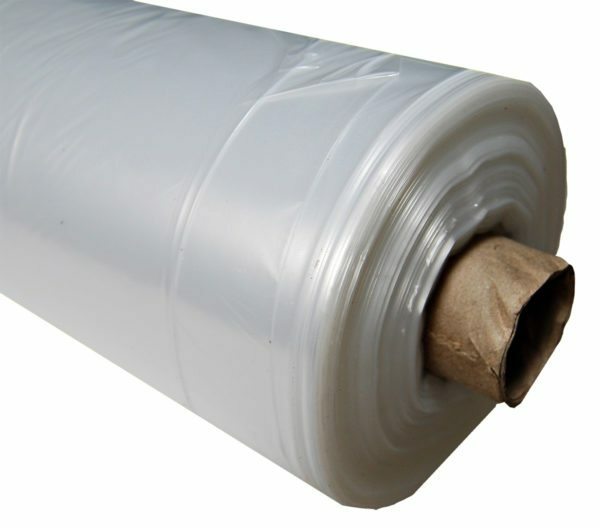
A single-layer plastic film is cheap, but not durable
Advantages:
- Low cost. This waterproofing is the cheapest of all existing rolling materials;
- Reliability. Subject mounting technology, the material is moisture;
- Strength. The coating does not break during installation and can withstand high wind loads provided that the reinforcing layer;
- Resistance to low and high temperatures. Polyethylene retains its properties both in the cold and under the baking sun.

The polyethylene film can last up to 25 years
NDR:
- Low durability. The film is less than many other materials;
- The possibility of depressurization. Plastic film sufficiently easily broken, particularly if in contact with sharp surfaces. This shortcoming is particularly true single-layer material.
When mounting the films and diffuse membranes must provide overlapping webs of about 250 mm. Furthermore, the joints desirable prokleivat adhesive tape.
Cost. Price reinforced film for a roll starts from 1500-1600 rubles. A single-layer film is worth a half to two times cheaper.
Material 5: evroruberoid
Euroruberoid - it is an improved version of the conventional roofing material, which was popular in the Soviet times. Recall that roofing material is a bituminous material on a paper basis.
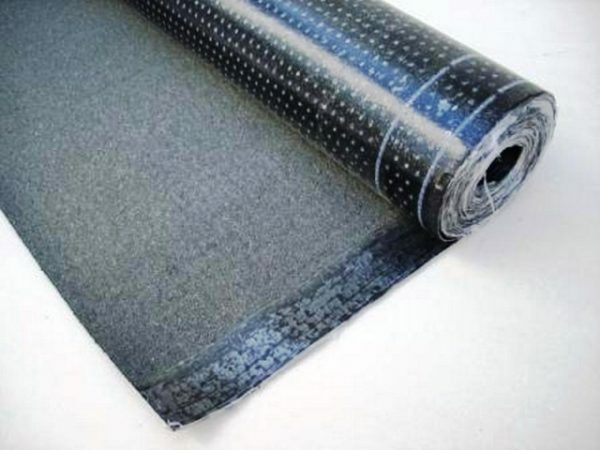
Euroruberoid - modern bitumen-polymer waterproofing material
The most serious roofing disadvantages are low efficiency. He was not able to fully protect the roof from moisture. In addition, there are other disadvantages, such as low strength and fragility - the life of the material does not exceed 5 years.
Euroruberoid is deprived of these disadvantages. It is made on the basis of glass fiber, fiberglass or polyester, which makes the fabric more durable. Sam bitumen modified with polymers that provide good moisture resistance material.
Depending on the destination evroruberoid divided into two types:
- With grit. Not only used as insulation, but also as roofing for flat roofs;
- Without spreading. Exclusively used for waterproofing roofs, resulting in need of finish.

Euroruberoid has a multilayer structure
dignity:
- Strength. Due to the reinforcing layer, the material can withstand high mechanical loads;
- Durability. service life can reach 25 or even 30 years of age;
- Low cost. Euroruberoid is cheaper than many of the membrane coatings.
Disadvantages. The minus is a need for a gas burner during laying. However, some types of evroruberoida have a self-adhesive surface that allows them to be laid without the use of additional equipment.

Euroruberoid Technonikol - quality waterproofing material from domestic producers
cost:
| Mark | Cost, rub. |
| Bikrost (with grit) 10m2 | 700 |
| Technonikol (without spreading) 10 m2 | 650 |
| Poliruf Flex (without spreading) 10 m2 | 1370 |
| IZOBOKS TOP (coated) 10 m2 | 5500 |
obmazochnye materials
The second place in popularity is the liquid material for waterproofing. These include:
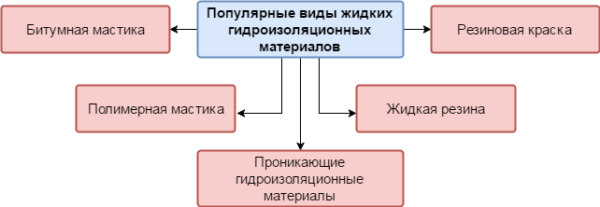
liquid materials
Material 6: bitumastics
Mastic is a plastic adhesive compound based on bitumen. often added to polymers and certain other components to improve the properties in the mastic.
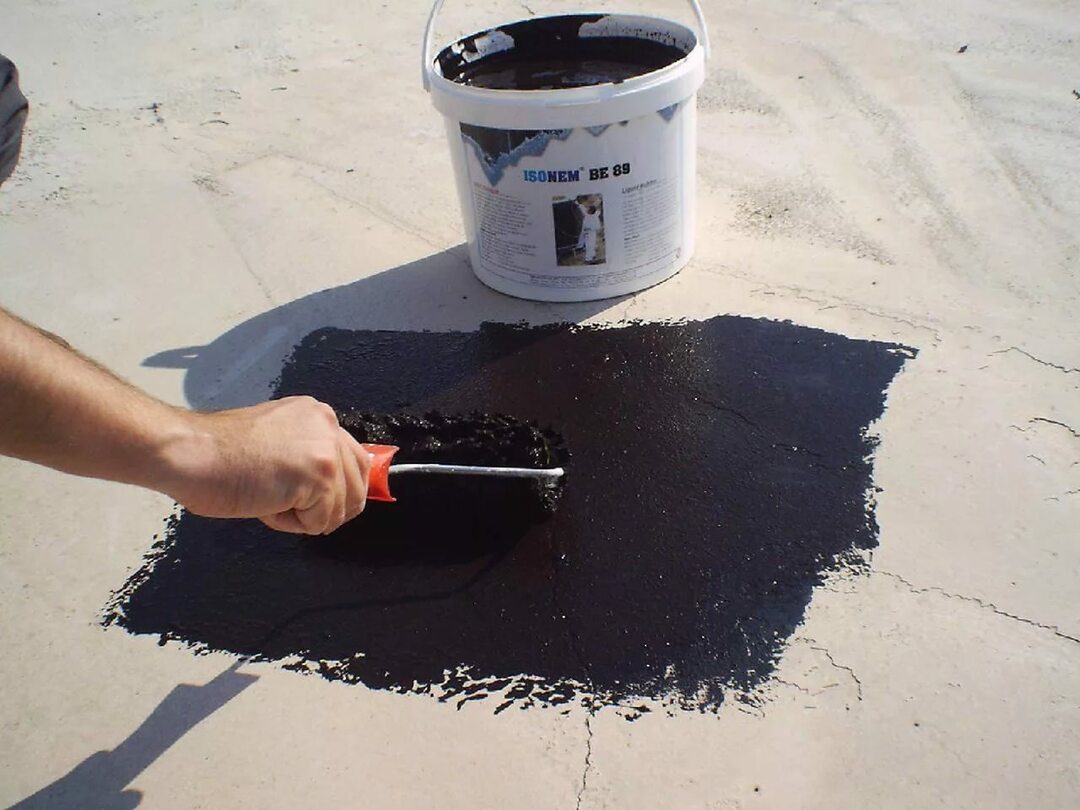
In the photo asphalt mastic - the most expensive of coating waterproofing coating
I must say that the mastic asphalt is not used as a separate waterproofing material, and is used in combination with coil coating - membrane or evroruberoida. Accordingly, the coating is used for flat roofs, the angle of slope which is in the range 0-30 degrees.
Depending on the application, bitumen mastic is divided into two types:
- Hot application. Has a very hard consistency, however before the application is heated to a liquid state;
- Cold drawing. It can be applied without preheating. The only certain types of mastic prior to application require the addition of a solvent.
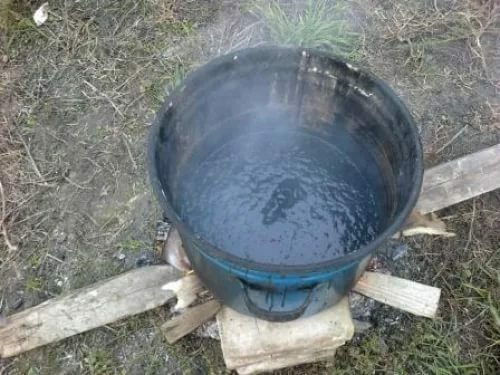
Some types of bituminous mixture before heating need heating
Advantages:
- Ability processing surfaces of complex shape. This quality applies to all liquid waterproofing materials;
- Durability. The coating can last for more than 25 years;
- Good adhesion. With this sealant does not peel off from the base. Moreover, it can be applied not only to concrete but also many other types of surfaces;
- Ease of application. Mastic is easily applied by hand, using a brush, roller or trowel;
- Low cost. Bitumen mastic - the most cheapest type of surface waterproofing.

Treated mastic asphalt roof should be covered with waterproofing roll
Disadvantages:
- Prolonged deposition process. Mastic long dries, and it is applied in several layers. This greatly increases the roofing works;
- It can not be used as an independent material. Mastic may not fully protect the roof from moisture;
- Instability to high temperatures. Under the burning sun mastic may start to melt. Therefore, it can not be used for roofs with a large angle of inclination.
cost:
| Mark | Cost, rub. |
| AquaMast 1 kg | 45 |
| MBI 15 kg | 245 |
| Technonikol 1 kg | 60 |
| Decken 1 kg | 50 |
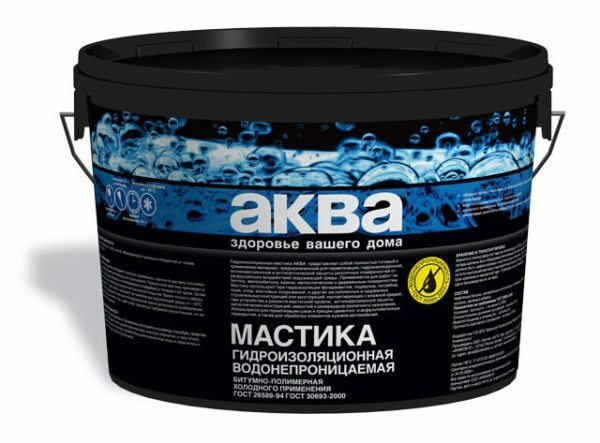
A resin sealant has better performance than bitumen
Material 7: Polymer mastic
A polymer sealant is reminiscent of bitumen, however, it has higher performance.
Advantages:
- the rate of drying. The coating dries in several times faster as compared with bitumen analogue;
- Resistance to high temperature. Waterproofing stands, heating to 70 degrees, and thus does not melt;
- Efficiency. Polymer mastic, in contrast to bitumen, did not leak water.
The other advantages are the same as that of the bituminous analog.

Polymer sealant sets quickly
Disadvantages. By cons polymer mastic concerns only the higher its price.
cost:
| Mark | Cost, rub. |
| GIDRIZ-K 10 kg | 840 |
| Gidropan 1 kg | 190 |
| Raster 1 kg | 130 |
| Weber tec 8 kg | 2150 |

Rubber paint - a modern waterproofing material of new generation
Material 8: rubber paint
Rubber paint - Paint is waterproofing, ie material not only protects the roof surface from moisture, but it provides a decorative film of a color. Rubber paint, this is called because of its high elasticity. When applied in multiple layers, it even feels soft, like rubber.
This coating is made based or acrylic latex polymer. On the composition of this painting refers to the water-dispersion, making has a number of positive qualities.

Rubber paint can be coated with slate and other roofing materials
Advantages:
- Versatility. Rubber paint can be used for flat roofs and for pitched, striking over a slate or metal coatings. This eliminates small crevices and cracks in the roofing materials;
- Elasticity. With this rubber paint does not crack;
- Good adhesion. The coating is securely held by the base, so do not peel off during operation;
- UV resistance. Covering almost does not change color over the entire lifetime;
- The high rate of drying. The paint dries within a few hours after application.
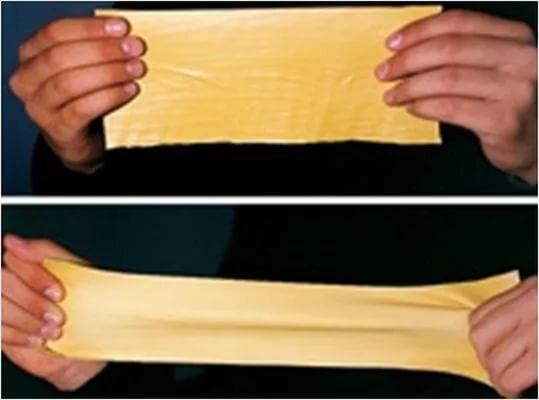
Rubber has high elasticity paint
Disadvantages:
- Fragility. The coating is no more than 7-10 years;
- High price. The paint is much more expensive than many other liquid waterproofing coatings;
- The possibility of a "spider web". Under the influence of the sun and other negative environmental factors on the surface of the paint may appear non-through microcracks.
cost:
| cost of | price, rub. |
| Super decor, 3 kg | 730 |
| The chief technologist 11.5 kg | 3000 |
| Hood Master 1.3 kg | 500 |
| Poly-F 6 kg | 1900 |
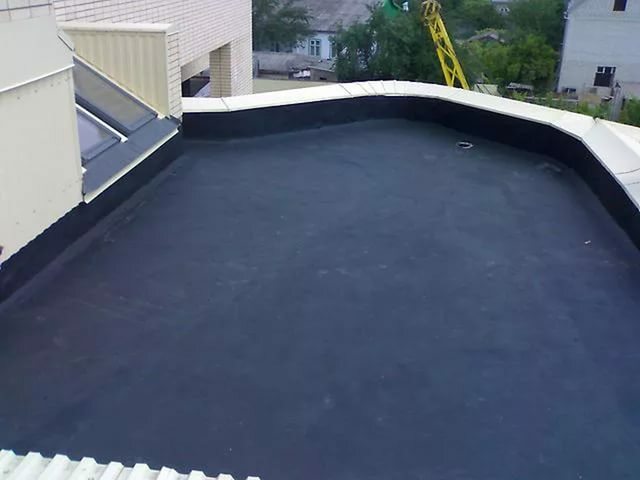
Liquid Rubber - industrial waterproofing material
Material 9: liquid rubber
The liquid rubber is largely similar to the material described above. However, if the latter is a household paint, the liquid rubber - it can be said industrial waterproofing.
Typically, the active material is a two component composition which can be applied in several ways:
- by spraying. This method allows you to get the most high-quality and durable finish. Its only drawback is the need for special equipment, making it impossible to perform any waterproofing works;
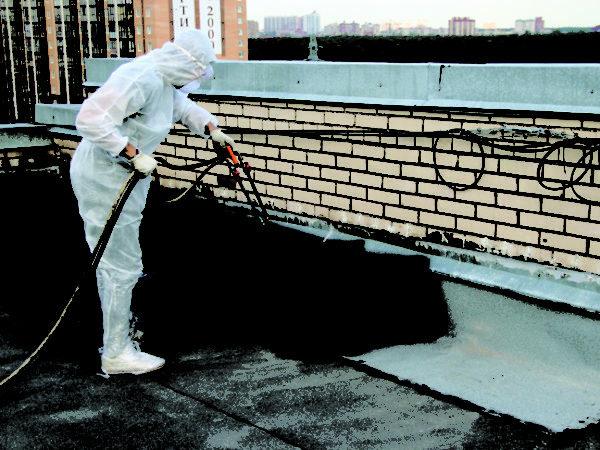
Spray - the surest way to the roof waterproofing liquid rubber
- By painting. A fairly simple technology, the essence of which consists in applying a composition of pasty consistency with a spatula or brush;
- Self-leveling process. In this case, the coating liquid consistency simply poured on a flat roof and leveled.

The liquid rubber has high strength and elasticity
Advantages:
- High elasticity. According to this indicator, the liquid rubber is superior to the rubber paint;
- Durability. The coating may be from 20 to 50 years;
- High adhesion. As rubber paint, waterproofing can be applied on practically any surface;
- Possibility of applying the finishing coating. This allows you to turn the flat roof in the usable area.
Disadvantages. Pronounced drawbacks of the coating is not present, except for the need for expensive equipment for applying waterproofing mechanically.
cost:
| Mark | The cost in rubles per 1 kg |
| Slav | 184 |
| Fargotek | 349 |
| LMC CCCP | 210 |
| AkTerm | 250 |

Penetrating waterproofing increases the water resistance of concrete
Material 10: penetrating waterproofing
Finally, consider this kind of coverage as penetrating waterproofing. It is used for sealing flat concrete roofs.
The principle of operation of this coating is to fill the concrete pores. The liquid penetrates into the structure of the capillary system, and then crystallized. As a result, concrete water repellent.
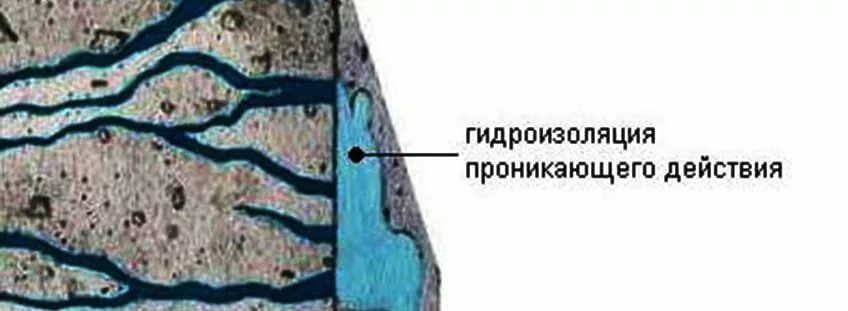
Penetrating waterproofing fills the pores of the concrete
Advantages:
- The simplicity and speed of application. Concrete surface can be treated with a conventional paint roller;
- The water vapor permeability. Impregnation repel water, but the steam is passed;
- It strengthens the foundation. Such coatings make stronger concrete surface, prevent surface painting and dusting.
Disadvantages. The minus is the inability to use as a separate coating material. Penetrating waterproofing is used only as an additional measure of protection against moisture concrete roof.

Penetron - well proven penetrating waterproofing from domestic producers
cost:
| Mark | The cost in rubles per 1 kg |
| PENETRON | 190 |
| CT Throne | 250 |
| ArmMiks | 120 |
Output
You are familiar with the features of the most popular to date, waterproofing materials for roofs. Additionally, check out the video in this article. If you do not get to choose, or have any other questions - leave them in the comments and I will gladly answer.
